Discover 20 hidden attractions, cool sights, and unusual things to do in Amman (Jordan). Don't miss out on these must-see attractions: Amman Citadel, Museum of Parliamentary Life, and Royal Automobile Museum. Also, be sure to include Control tower Ayyubid in your itinerary.
Below, you can find the list of the most amazing places you should visit in Amman (Amman).
Table of Contents
Amman Citadel
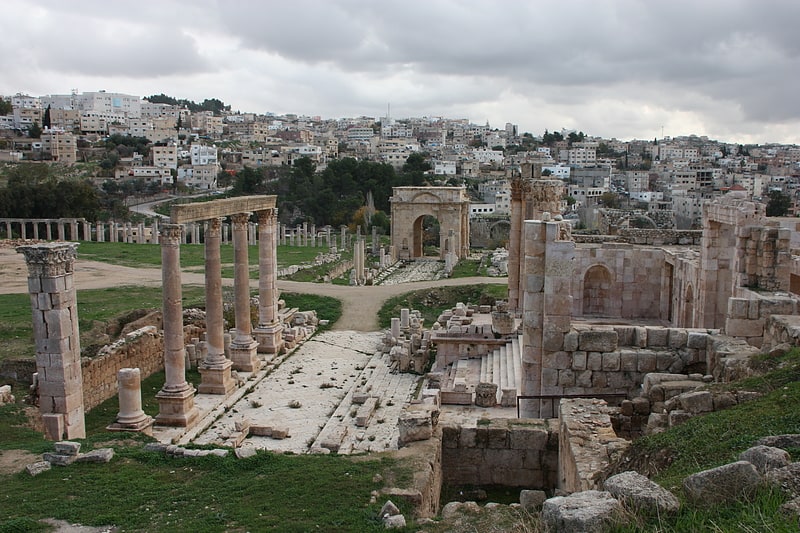
Also known as: جبل القلعة
Well-known historic site with ruins. The Amman Citadel is an archeological site at the center of downtown Amman, the capital of Jordan. The L-shaped hill is one of the seven hills that originally made up Amman.
The Citadel has a long history of occupation by many great civilizations. Evidence of inhabitance since the Neolithic period has been found and the hill was fortified during the Bronze Age (1800 BCE). The hill became the capital of the Kingdom of Ammon sometime after 1200 BCE. It later came under the sway of empires such as the Neo-Assyrian Empire (8th century BCE), Neo-Babylonian Empire (6th century BC), the Ptolemies, the Seleucids (3rd century BCE), Romans (1st century BCE), Byzantines (3rd century CE) and the Umayyads (7th century CE). After the Umayyads, came a period of decline and for much of the time until 1878 as the former city became an abandoned pile of ruins only sporadically used by Bedouins and seasonal farmers. Despite this gap, the Citadel of Amman is considered to be among the world's oldest continuously inhabited places.
Most of the structures still visible at the site are from the Roman, Byzantine, and Umayyad periods. The major remains at the site are the Temple of Hercules, a Byzantine church, and the Umayyad Palace. The Jordan Archaeological Museum was built on the hill in 1951. Though the fortification walls enclose the heart of the site, the ancient periods of occupation covered large areas. Historic structures, tombs, arches, walls and stairs have no modern borders, and therefore there is considerable archaeological potential at this site, as well as in surrounding lands, and throughout Amman. Archaeologists have been working at the site since the 1920s, including Italian, British, French, Spanish, and Jordanian projects, but a great part of the Citadel remains unexcavated.[1]
Museum of Parliamentary Life
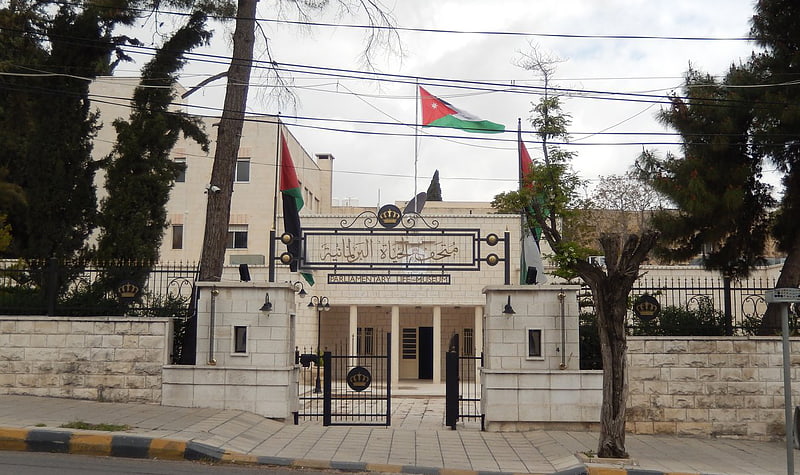
Museum in Amman. Museum of Parliamentary Life is one of the Jordanian museums, which are owned of the Jordanian Ministry of Culture, The Parliamentary Life museum is one of the first models of the parliamentary museums around the world. The Museum of Parliamentary Life aims to highlighted on the efforts exerted by the Hashemite leadership over the past decades in establishing and building Jordan.[2]
Royal Automobile Museum
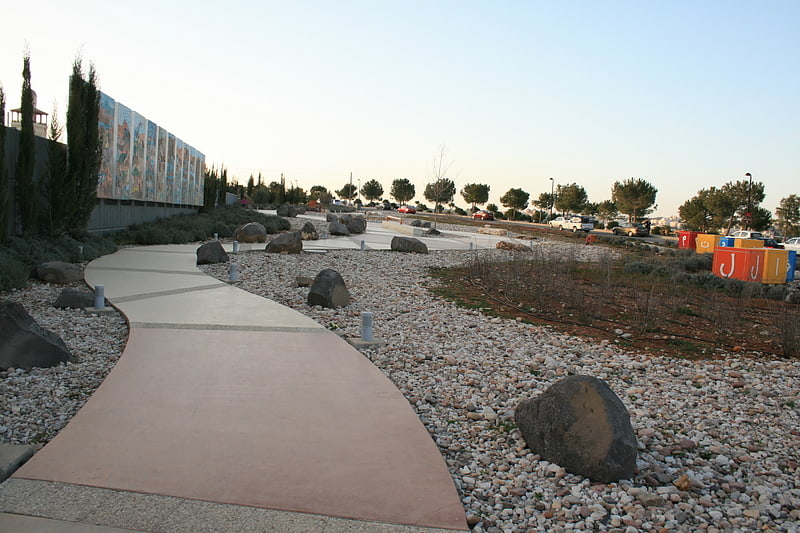
Also known as: متحف السيارات الملكي
Museum in Amman, Jordan. The Royal Automobile Museum is an automobile museum in Amman, Jordan.[3]
Address: King Hussein Park, 111953 عمان
Control tower Ayyubid
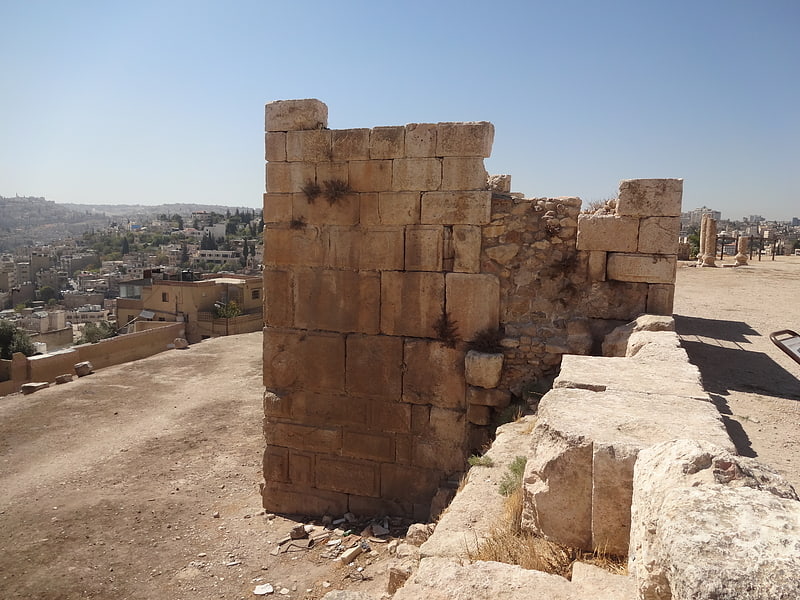
The Ayyubid watchtower is a stone tower dating back to the Ayyubid period, more specifically in the year 1220, on the southern wall of the Amman Citadel in the center of the Jordanian capital, Amman. It is located in an area adjacent to the much older Temple of Hercules. It also contains traces of other civilizations that have succeeded in the city for thousands of years.[4]
The Jordan Museum
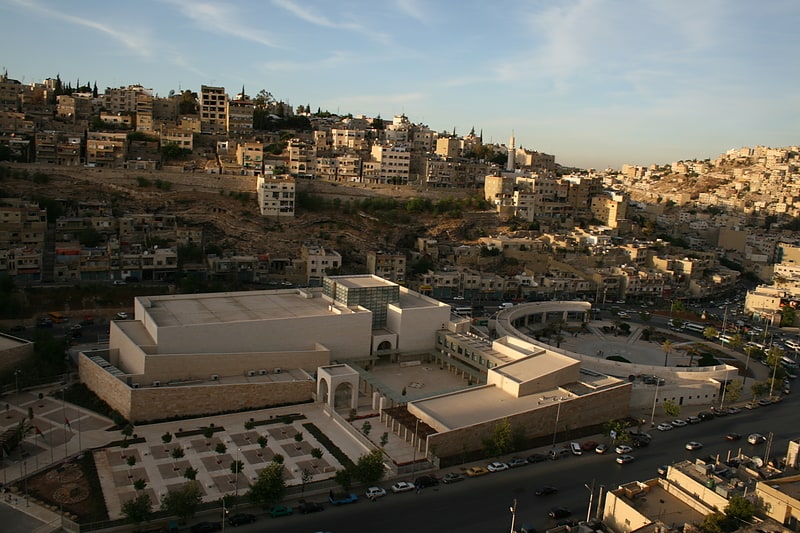
Also known as: متحف الأردن
Museum in Amman, Jordan. The Jordan Museum is located in Ras Al-Ein district of Amman, Jordan. Built in 2014, the museum is the largest museum in Jordan and hosts the country's most important archaeological findings.
The museum presents artifacts from various prehistoric archaeological sites in Jordan, including the 7500 BC 'Ain Ghazal statues which are regarded as some of the oldest human statues ever made by human civilization.
The collections in the museum are arranged in chronological order and also features lecture halls, outdoor exhibitions, a library, a conservation centre and an area for children's activities. The museum was established by a committee headed by Queen Rania, which became the only museum in Jordan to implement modern artifact preserving technologies.[5]
Address: Ali bin Abi Taleb Street, 11183 Amman
Jordan Archaeological Museum
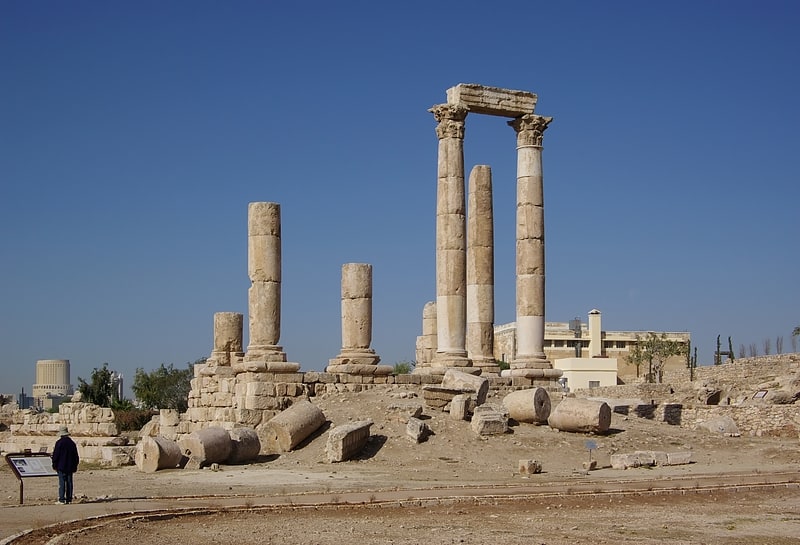
Also known as: متحف الآثار الأردني
Museum in Amman, Jordan. The Jordan Archaeological Museum is located in the Amman Citadel of Amman, Jordan. Built in 1951, it presents artifacts from archaeological sites in Jordan, dating from prehistoric times to the 15th century. The collections are arranged in chronological order and include items of everyday life such as flint, glass, metal and pottery objects, as well as more artistic items such as jewelry and statues. The museum also includes a coin collection.
The museum formerly housed some of the Dead Sea Scrolls, including the only copper scroll, which are now on display in the newly established Jordan Museum, along with the Ain Ghazal statues, which are among the oldest statues ever made by human civilization.[6]
Address: Old Town, Amman
The Duke's Diwan

Museum in Amman, Jordan. The Duke's Diwan is an arts and cultural center and historic house museum. Located on King Faisal Street in downtown Amman, it is housed in one of the city's oldest buildings.
Built in 1924 as Amman's first post office, the building later became the Finance Ministry, and then the Haifa Hotel from 1948 to 1998. In 2001, it was rented by Mamdouh Bisharat, a Jordanian heritage conservationist and businessman, at double its price to prevent the building's owners from knocking it down. Bisharat turned the building into a Diwan, a gathering place for artists, thinkers, and poets. The rooms of the Diwan, filled with antiquities, pictures, and old furniture, are arranged to show visitors how Jordanians lived during the 20th century.[7]
Royal Tank Museum
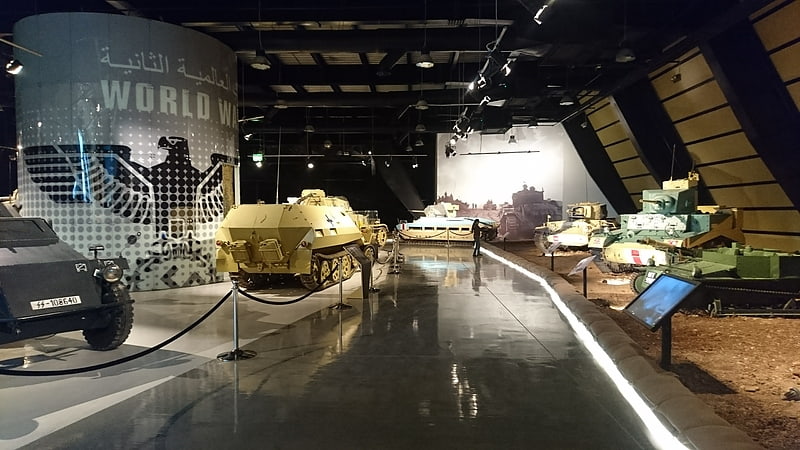
Museum in Amman, Jordan. The Royal Tank Museum is a Tank museum in Amman, Jordan. Located next to the King Abdullah II Park in Al-Mugableen, the museum was established in 2007 upon King Abdullah's directives. The museum building was designed by Zaid Daoud Architects as a "futuristic sand castle that borrows from the language of Stealth." It has close to 20,000 sq. m of exhibition space divided into thirteen halls showcasing hundreds of light and heavy military items placed in their historic chronological order "for dramatic impact". Each hall presents a different perspective of machinery and scenery and features around 110 tanks, many of which are historical and were used in Jordan's past wars and battles.
The museum was opened on January 29, 2018, in a ceremony led by His Majesty King Abdullah II of Jordan.[8]
King Abdullah I Mosque
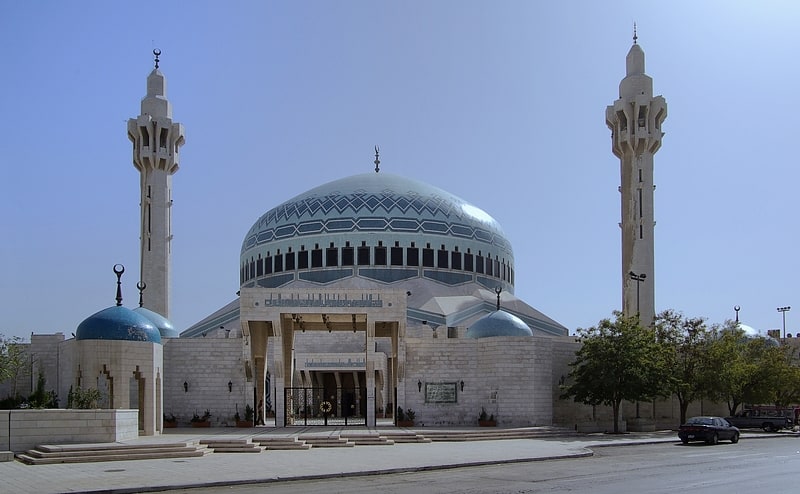
Also known as: مسجد الملك عبد الله الأول
Majestic, blue-domed mosque complex. The King Abdullah I Mosque in Amman, Jordan was built between 1982 and 1989. It is capped by a magnificent blue mosaic dome beneath which 3,000 Muslims may offer prayer.
Tourists are allowed to visit. Men must have long trousers on and women must cover their heads, arms and legs. A hooded gown is provided free of charge for this purpose.[9]
Address: Sulayman An Nabullsi, Amman
Temple of Hercules
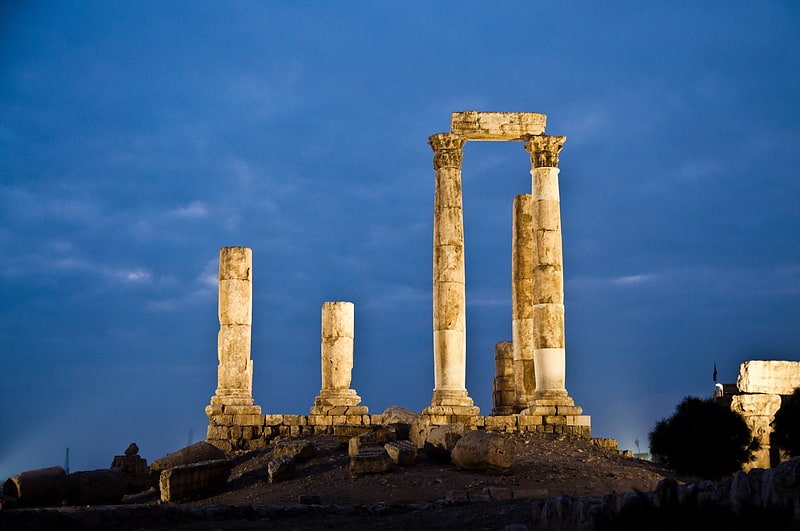
Also known as: معبد هرقل
Historical place in Amman, Jordan. Temple of Hercules is a historic site in the Amman Citadel in Amman, Jordan. It is thought to be the most significant Roman structure in the Amman Citadel. According to an inscription the temple was built when Geminius Marcianus was governor of the Province of Arabia, in the same period as the Roman theater in Amman.[10]
Umayyad Palace
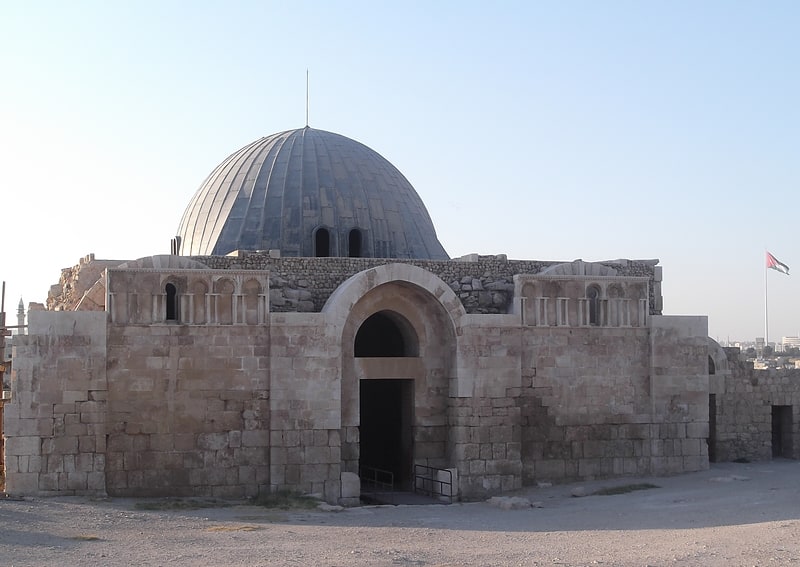
Also known as: القصر الأموي
Historical landmark in Amman, Jordan. The Umayyad Palace is a large palatial complex from the Umayyad period, located on the Citadel Hill of Amman, Jordan. Built during the first half of the 8th century, it is now largely ruined, with a restored domed entrance chamber, known as the "kiosk" or "monumental gateway".[11]
Roman Theater
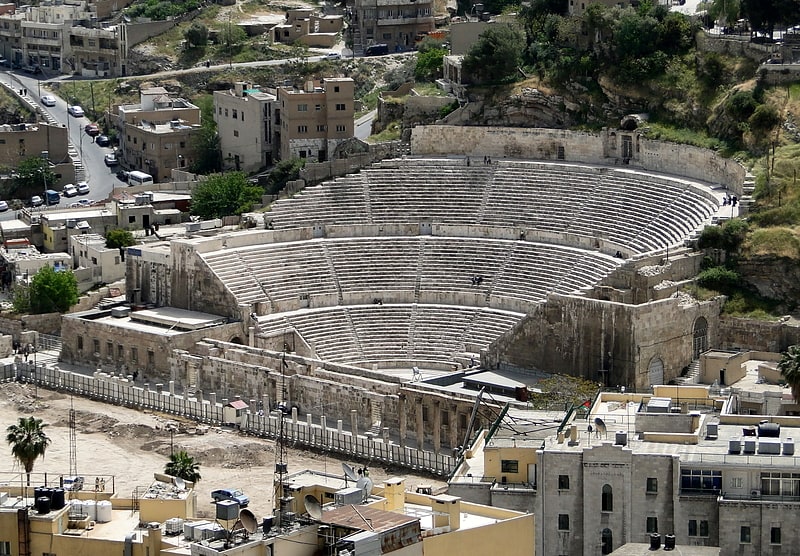
Also known as: المدرج الروماني
Hillside amphitheater with 2 museums. Amman's Roman Theatre is a 6,000-seat, 2nd-century Roman theatre. A famous landmark in the Jordanian capital, it dates back to the Roman period when the city was known as Philadelphia. The theatre and the nearby Odeon are flanking the new Hashemite Plaza from the south and the east respectively, while the Roman Nymphaeum is just a short stroll away in north-westerly direction.[12]
Jordan Folklore Museum

Also known as: متحف الفولكلور الأردني
Museum in Amman, Jordan. Jordan Folklore Museum is a museum in Amman, Jordan. It is located next to the Roman amphitheater, it was established in 1971. The museum showcases a collection of Jordanian cultural heritage items from the desert, villages, and towns including; costumes, musical instrument and handicrafts. Along with mosaics.[13]
Al Hussein Public Parks

Also known as: حدائق الحسين
Community garden in Amman, Jordan. Al Hussein Park is a public park in Amman, Jordan that continues to be under construction. The project attempts to create a landmark for the city by including a cultural village, sports fields, memorial building, historical passageway, decorated gardens, amphitheater, circular yard, Royal Automobile Museum, King Hussein Mosque and The Children's Museum Jordan.[14]
Address: King Abdullah II, Amman
Our Lady of the Annunciation Church
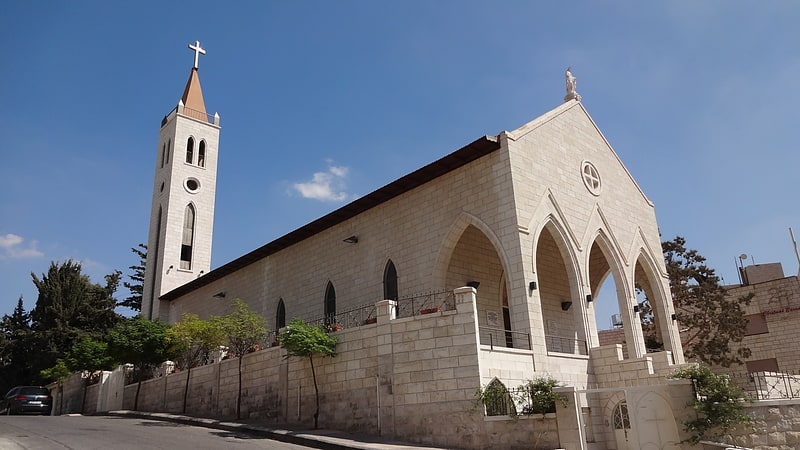
Also known as: كنيسة سيدة البشارة
Our Lady of the Annunciation Church or simply Church of Jabal Webdeh is a Catholic parish in Jabal al-Weibdeh in the city of Amman.
The parish is Roman (or Latin) rite, under the jurisdiction of the Latin Patriarchate of Jerusalem (Patriarcha Hierosolymitanus Latinorum). The parish celebrated its 50-year parish anniversary in 2012, and was restored for the occasion with funds from the Patriarchate.
The Patriarchate was restored by Pope Pius IX in 1847 by the apostolic brief Nulla celebrior.[15]
Abdoun Bridge
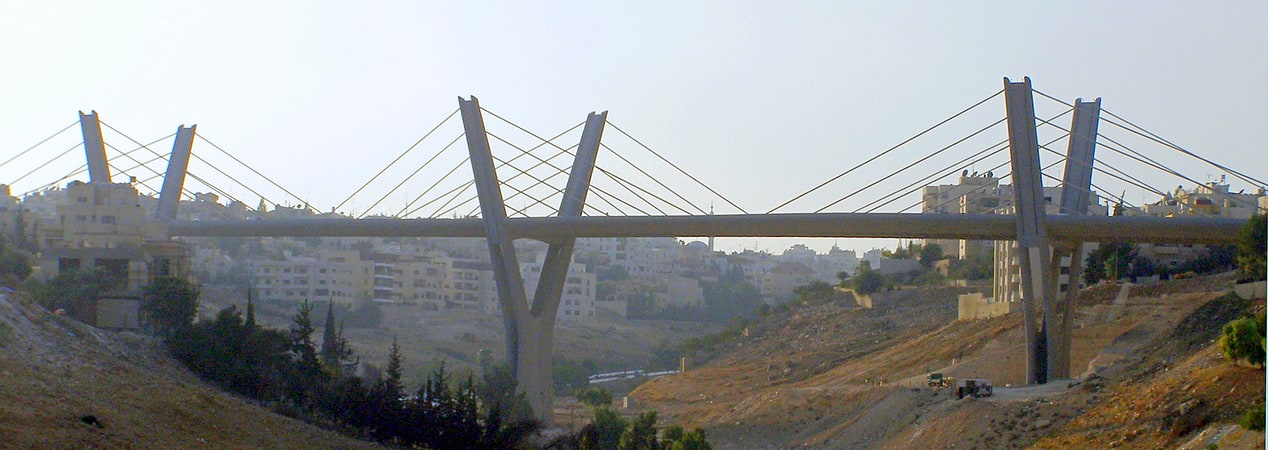
Also known as: جسر عبدون
Cable-stayed bridge in Amman, Jordan. Wadi Abdoun Bridge is a bridge in Amman, Jordan. The only cable-stayed bridge in the country, it crosses the Wadi Abdoun. The building of the bridge commenced on 14 December 2002 and it was opened on 14 December 2006 and was built by Larsen & Toubro Limited, an Indian multinational company. It is part of Amman's Beltway project and links South Amman to the 4th Circle and Zahran Street.[16]
Address: Queen Noor, Amman
The Children's Museum
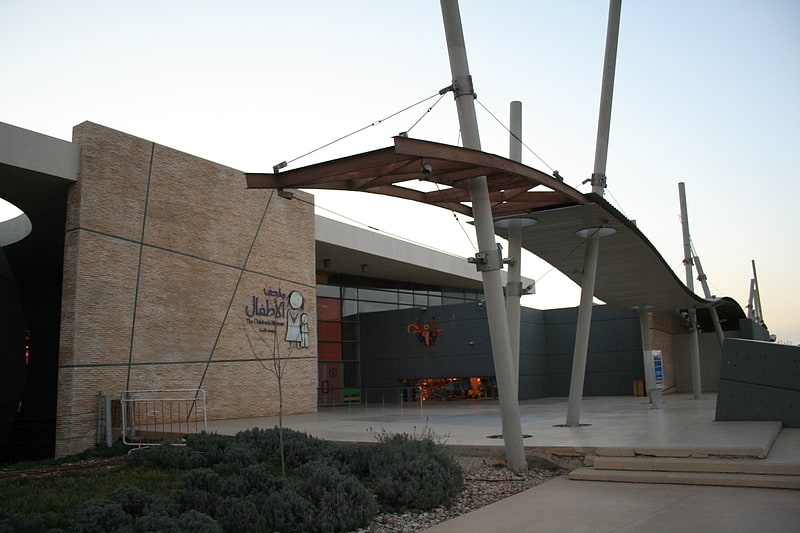
Also known as: متحف الأطفال
Museum in Amman, Jordan. The Children's Museum Jordan is a children's museum in Amman, Jordan. It is located in Al Hussein Public Parks.
The museum was launched by Queen Rania Al Abdullah in 2007. It is a member of the Association of Children's Museums and Hands On! International. 8,000 m2 (86,000 sq ft) includes 180 interactive indoor and outdoor exhibits, and educational facilities, such as an art studio, a library, a multipurpose hall, an outdoor theater, Tinker Lab and Secret Garden, a restaurant with an adjunct party room and a gift shop. On standby are additional spaces with potential for development, such as the exhibit hall extension, a botanical garden annex and the special effects auditorium.
In 2012, the Mobile Museum was launched, targeting children and families living all around Jordan, with the aim of extending the Children's Museum's learning experiences to more children across the kingdom.[17]
Address: King Hussein Park, 11831 Amman
Qasr al-Abd
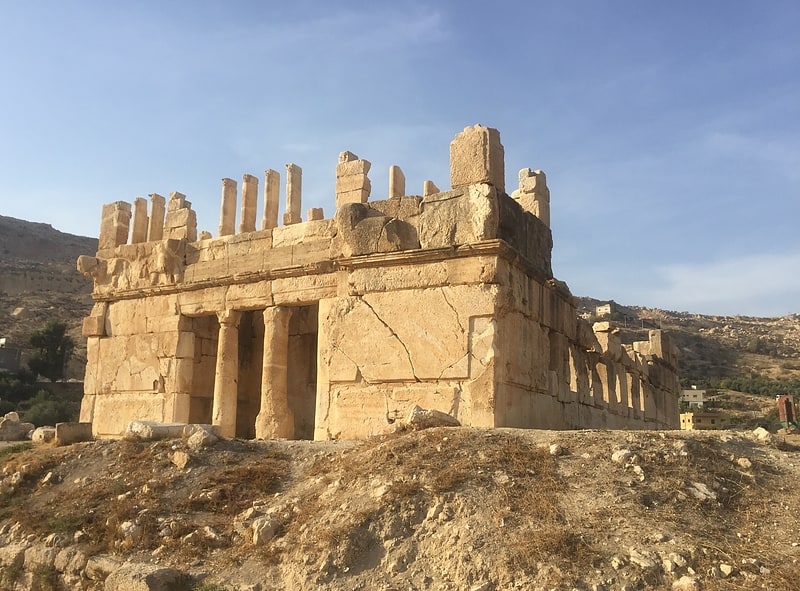
Also known as: قصر العبد
Palace in Amman, Jordan. Qasr al-Abd is a large Hellenistic palace from the first quarter of the second century BCE. Most scholars agree it was built by the Tobiads, a notable Jewish family of the Second Temple period. Its ruins stand in modern-day Jordan in the valley of Wadi Seer, close to the village of Iraq Al-Amir, approximately 17 kilometers west of Amman.[18]
Al-Iskan Bank Building
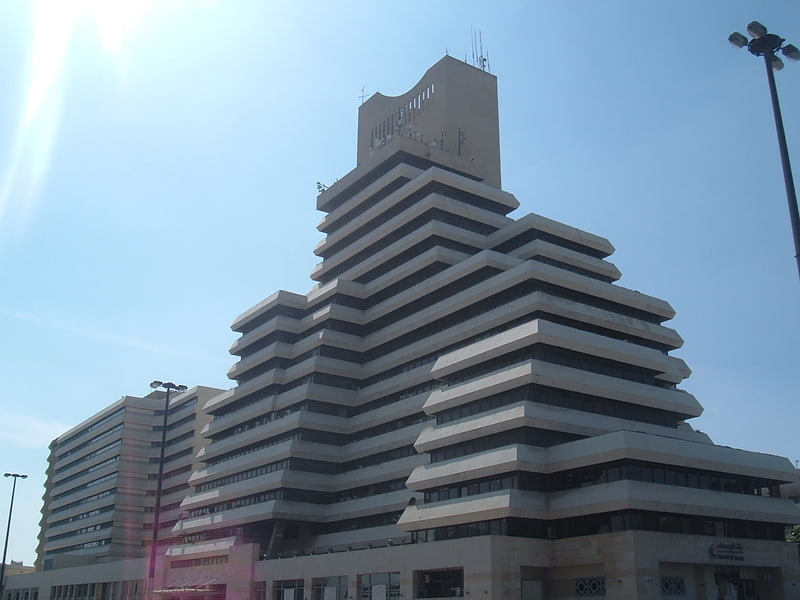
Al-Iskan Bank Building is a 98-meter tall commercial building containing offices belonging to the Housing Bank for Trade and Finance located in Amman, Jordan. It is considered to be a popular landmark in Amman.[19]
The Martyrs' Memorial and Museum
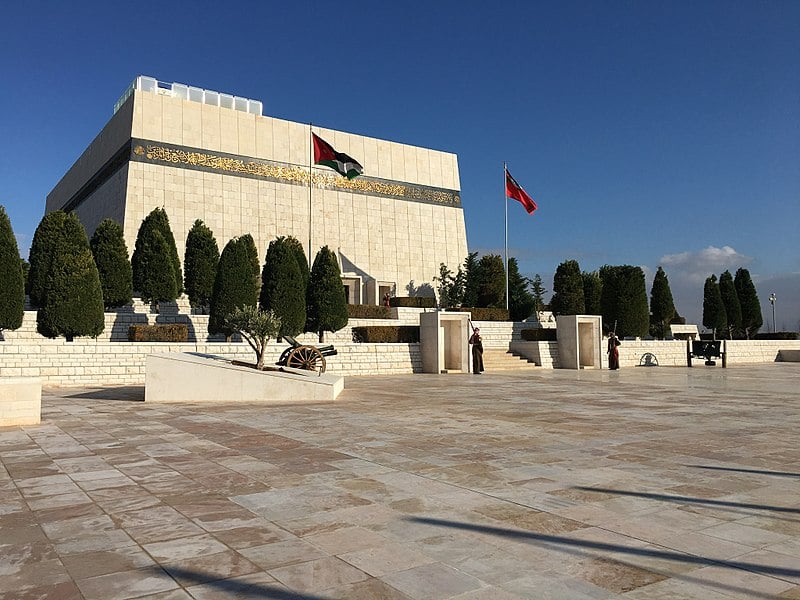
Also known as: متحف صرح الشهيد
Museum in Amman, Jordan. Martyrs' Memorial is a memorial and museum in Amman, Jordan.
Located next to the Amman Sport city, the museum was established in 1977 upon King Hussein's wishes. The museum showcases a rare collection of Jordan's military weapons, clothing and vehicles. It also serves as a memorial to the martyrs who gave their lives in the service of Jordan as early as 1915, starting with the Great Arab Revolution which was led by King Hussein's grandfather Hussein bin Ali.[20]